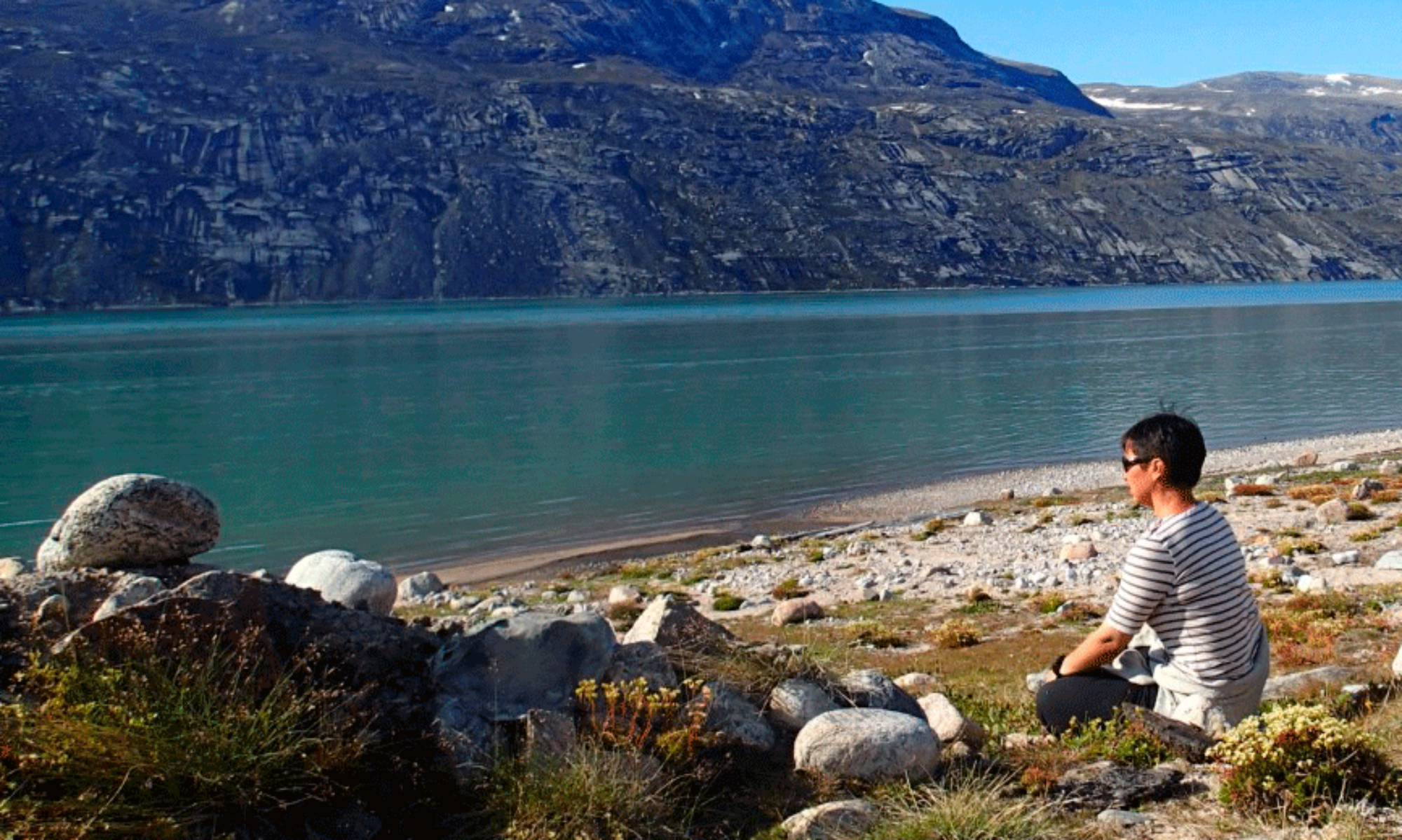I’ve wanted to go to Alaska ever since I’ve been aware of the place and aware of my Inuitness. Last June I was finally given an opportunity to visit Qikiqtaġruk/Kotzebue. I was so excited and could not believe it was actually happening. The gathering was something my friend Dalee Sambo-Dorough and I had spoken about: getting arctic peoples together to talk about our vision (for us and our people), without the constraints and limitations of colonial institutions. Dalee made it happen, with the help of our friend Anne Henshaw.
The gathering had an amazing group of people who work and think about decolonization and reclamation in various forms. Our hosts were so welcoming and awesome (thank you Corina & Lance Kramer and Lucy Boyd – my heart thanks you for life)!
The setting could not have been better. The discussions were heartfelt and honest, productive in the sense they felt hopeful. This is so important as we live with so much despair in our lives and communities with so many demoralizing barriers to do anything about our conditions.
The highlight was that we got to go on a land trip where we collected eggs of various birds. There were birds I had never heard of. Walking long distances to harvest in peace and serenity, and finding eggs was so rewarding.
We also had a country food night, where we ate very familiar foods. Our food! But also some new ones for us, new to me because they were more plant based of things we may not have in our area. The focus on garden of the sea of ugruk/ujjuk, maktaaq, fish, felt like home!
The abundance of wildlife and the beauty of the landscape made me wonder why Inuit of East of Alaska would have left there. It’s a stunning place with lots of wildlife.
During our visits, tour and conversations we heard stories about how Inuit from the region would gather in Qikiqtaġruk. There would be conflicts and fights. There were boundary marks for different groups, shelters with secret exits and tunnels. Another statement from a story stood out: that children were raised to be warriors. The person (Lance Kramer) asked why is it that we were raised as warriors that we allow colonial forces to rule. The question I’ve asked myself is, why can’t our goodness and kindness win against these forces. We are such good people, it seems to our own detriment at times.
The stories of conflict and fighting made me think we are a Tuniit mix in this region. The more I thought about it, the more it made sense.
Not that we’ve never had conflict. We certainly have, hence stories like Atanarjuaq; stories in places like Arctic Bay area of warring long time ago; Story of Qillarjuaq, and others. However, most of our stories and teachings are avoiding conflict, dealing immediately with conflict and aiming to live in harmony.
If you look online the story about Kunuk the Orphan (here https://www.degruyter.com/document/doi/10.1515/9780773594593-toc/pdf ) collected in Greenland, clearly a story based in Alaska, it is about conflict. It explains in the introduction it is not clear whether the fights described were against other group of Inuit or allait/different peoples.
That was the other realization, how Greenlanders are more direct descendants of Alaskan Inuit than us, linguistically, but also the stories and clothing. I’ve known this in conversation with linguistic friends, it just became more apparent while in Alaska with Inuit from Greenland and Canada.
Yes, striving for unity and harmony is true for all Inuit regions. But hearing about raising children to be war ready, types and frequency of warring and conflict made me think about the timid and conflict avoidant Tuniit. That we’ve adopted these traits, because we are them?! Tuniit were also known to be small and very strong.
It is not just our social traits that seem to strongly suggest we are Tuniit. Linguistically speaking, as said Kalaliit are closer to Alaskan Inuit in terminology (not sure about structure). It may be due to our language evolution but maybe also Tuniit influence. As my linguist friend Katti Frederichsen says the further away from source of origin, the more a language evolves. So the closeness between Alaskan and Greenland dialects may be due to proximity in time of contact, but also influence by another group such as Tuniit.
There is more, look at our clothing especially kamiit, qulittat, pualuit and amautiit – our clothing is so different from Alaskans. I had thought in the past that it may be due to Inuit bordering allait, and the influence of that in clothing that their clothes more resemble them. It may be that too. It makes me wonder about evolution of our stories, how close our stories and myths are between the regions and how many distinct stories we may have in this region (if any).
But Tuniit are Inuit. Just an earlier wave of Inuit migrating east. So they would not have been as strangers to Inuit as allait for example. There would be shared traits, including language, tools, hunting methods, worldview. The thinking about Tuniit also made me more curious about our stories of them. And of course, relying less on western theories about our people. We know us, it’s in our stories.
